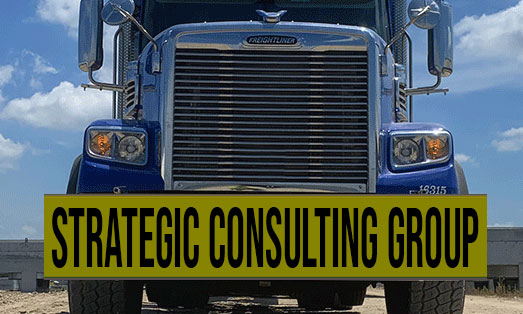Why you simply must checkout Risk Mitigation: Identifying and addressing potential risks. and Change Order Management
Risk Mitigation: Identifying and addressing potential risks. vs. Change Order Management
How Risk Mitigation Can Save Your Project (and Your Sanity)
Change orders: the bane of every project manager’s existence. They’re like the unexpected guest at your dinner party – always arriving at the worst possible time and demanding extra attention. But fear not, fellow project warriors! Risk mitigation is here to the rescue, armed with humor and a plan to keep those pesky changes in check.
Think like a fortune teller (but less sparkly): Predict the future of your project – the good, the bad, and the ugly. Will your contractor suddenly decide to build a disco ball in your living room? Will the school trip bus driver spontaneously combust? Don’t be caught off guard! Identify those potential risks before they turn into full-blown disasters.
Have a backup plan (and maybe a backup plan for the backup plan): Imagine your project like a Jenga tower. One change order can topple the whole thing. So, create a plan to address each potential risk – think of it as your safety net. And if that safety net fails, have a backup plan, like a giant bouncy castle to catch the falling Jenga blocks.
Remember, a little laughter goes a long way: Dealing with change orders can be stressful, but remember to inject some humor into the process. After all, you’re not building a rocket ship, you’re just trying to get your project done. (Unless you are building a rocket ship, then you’re really in trouble.)
Ready, Set, Plan! How to Avoid Problems Before They Happen
TL;DR – This article explains risk mitigation, a process for identifying and preventing potential problems before they happen. It uses examples like building a house or planning a school trip to make it easy to understand. Risk mitigation helps us stay safe, save money, and achieve our goals by thinking ahead and taking steps to avoid trouble.
What is Risk Mitigation?
Imagine you’re building a house. You want to make sure it’s safe, sturdy, and beautiful. But there are things that could go wrong, like bad weather, faulty materials, or mistakes during construction. Risk mitigation is like having a plan to deal with these potential problems before they happen. It’s about thinking ahead and finding ways to prevent or minimize the chances of things going wrong.
Why is Risk Mitigation Important?
Risk mitigation is important for many reasons:
- Safety: It helps us stay safe by identifying and addressing potential dangers. For example, if you’re planning a school trip, you’ll need to think about things like traffic safety, weather conditions, and first aid. Risk mitigation helps you make sure everyone is safe.
- Success: It helps us achieve our goals by reducing the chances of things going wrong. For example, if you’re building a house, risk mitigation can help you avoid delays, cost overruns, and potential structural problems.
- Money: It can help us save money by preventing problems that could cost us time and money to fix. For example, if you’re planning a party, you might need to consider things like bad weather or unexpected guests. Risk mitigation can help you plan for these possibilities and avoid unnecessary expenses.
Steps for Risk Mitigation
Here are some steps you can take to manage risks:
1. Identify Potential Risks:
- Think about everything that could go wrong. What are the possible problems, challenges, or obstacles you might face?
- Brainstorm with others. Ask friends, family, teachers, or colleagues for their input.
- Consider past experiences. Have you ever encountered similar situations in the past? What went wrong, and what could you have done differently?
2. Evaluate the Risks:
- How likely is each risk to happen? Some risks are more likely than others.
- How serious would the consequences be if the risk occurred? Some risks have bigger consequences than others.
- How much control do you have over the risk? Some risks are unavoidable, while others can be mitigated.
3. Develop a Mitigation Plan:
- Create a plan to address each risk. What steps can you take to prevent the risk from happening?
- Identify backup plans. What will you do if the risk occurs despite your efforts?
- Consider resources. What tools, equipment, or people will you need to implement your plan?
4. Monitor and Adjust:
- Keep track of your progress. Are you making progress in mitigating the risks?
- Be flexible. Things can change, so be prepared to adjust your plan as needed.
- Learn from experience. What worked well, and what could you have done differently?
Risk Mitigation in Different Situations
Risk mitigation can be used in many different situations, from building a house to planning a school trip. Here are some examples:
- Construction projects: Managing weather risks, choosing quality materials, and ensuring proper safety procedures.
- Financial investments: Diversifying investments, avoiding high-risk ventures, and having a plan for market fluctuations.
- Business ventures: Creating backup plans, managing competition, and adapting to market changes.
- Personal health: Maintaining a healthy lifestyle, taking preventive measures, and having an emergency plan.
Risk Mitigation in Change Order Management
Risk mitigation is also essential in change order management, especially when dealing with large projects like construction or renovation. Change orders are requests to change the original scope of work, which can lead to delays, budget overruns, and other complications.
Understanding Change Order Management
Change order management is the process of reviewing, approving, and implementing changes to a project’s scope of work. It’s important to have a clear and organized system for managing change orders to avoid confusion, delays, and disagreements.
How Risk Mitigation Applies to Change Order Management
Risk mitigation plays a crucial role in change order management by helping to prevent problems and minimize disruptions. Here are some ways risk mitigation can be applied in this context:
- Identify potential risks: Think about the potential risks associated with change orders, such as delays, cost increases, and changes in project scope.
- Evaluate the risks: Assess the likelihood and severity of each risk.
- Develop a mitigation plan: Create a plan to address each risk, including backup plans and procedures for handling unforeseen situations.
- Monitor and adjust: Keep track of changes and ensure the mitigation plan is effective.
Summary
Risk mitigation is a valuable process for individuals, businesses, and organizations. By identifying and addressing potential risks, we can increase our chances of success, safety, and financial stability. Whether you’re building a house, planning a school trip, or managing a construction project, thinking ahead and taking proactive steps can make a big difference in the outcome.
More on Risk Mitigation: Identifying and addressing potential risks.…
- ## Risk Mitigation Keywords:
- risk mitigation strategy
- risk identification and analysis
- risk assessment tools
- risk management software
- risk mitigation plan
- risk control measures
- risk mitigation techniques
- risk register
- risk appetite
- risk tolerance
- risk management framework
- risk management process
- risk mitigation best practices
- proactive risk management
- reactive risk management
- risk mitigation for projects
- risk mitigation for businesses
- risk mitigation for startups
- risk mitigation in construction
- risk mitigation in healthcare
- risk mitigation in finance
- risk mitigation in IT
- risk mitigation in cybersecurity
- risk mitigation for supply chain
- risk mitigation for natural disasters
- risk mitigation for climate change
- risk mitigation for economic uncertainty
- risk mitigation for political instability
- risk mitigation for regulatory changes
- risk mitigation for technological advancements
- risk mitigation for competition
- risk mitigation for innovation
- risk mitigation for growth
- risk mitigation for sustainability
- risk mitigation for compliance
- risk mitigation for ethics
- risk mitigation for reputation
- risk mitigation for human capital
- risk mitigation for financial capital
- risk mitigation for intellectual property
- risk mitigation for data security
- risk mitigation for privacy
- risk mitigation for disaster recovery
- risk mitigation for business continuity
- risk mitigation for crisis management
- risk mitigation training
- risk mitigation certification
- risk mitigation consultant
- risk mitigation audit
- risk mitigation reporting
- risk mitigation metrics
- risk mitigation ROI
- risk mitigation success factors
- risk mitigation challenges
- risk mitigation trends
- ## Change Order Management Keywords:
- change order management system
- change order process
- change order tracking
- change order approval
- change order workflow
- change order software
- change order automation
- change order documentation
- change order request
- change order analysis
- change order impact assessment
- change order negotiation
- change order approval process
- change order management best practices
- change order management for construction
- change order management for projects
- change order management for contracts
- change order management for legal compliance
- change order management for budget control
- change order management for project scope
- change order management for schedule management
- change order management for communication
- change order management for collaboration
- change order management for transparency
- change order management for accountability
- change order management metrics
- change order management reporting
- change order management tools
- change order management tips
- change order management training
- change order management consultant
- change order management audit
- change order management software comparison
- change order management case studies
- change order management challenges
- change order management trends
- change order management solutions
- change order management resources
- change order management glossary
- change order management FAQs
- change order management blog
- change order management forum
- change order management community


